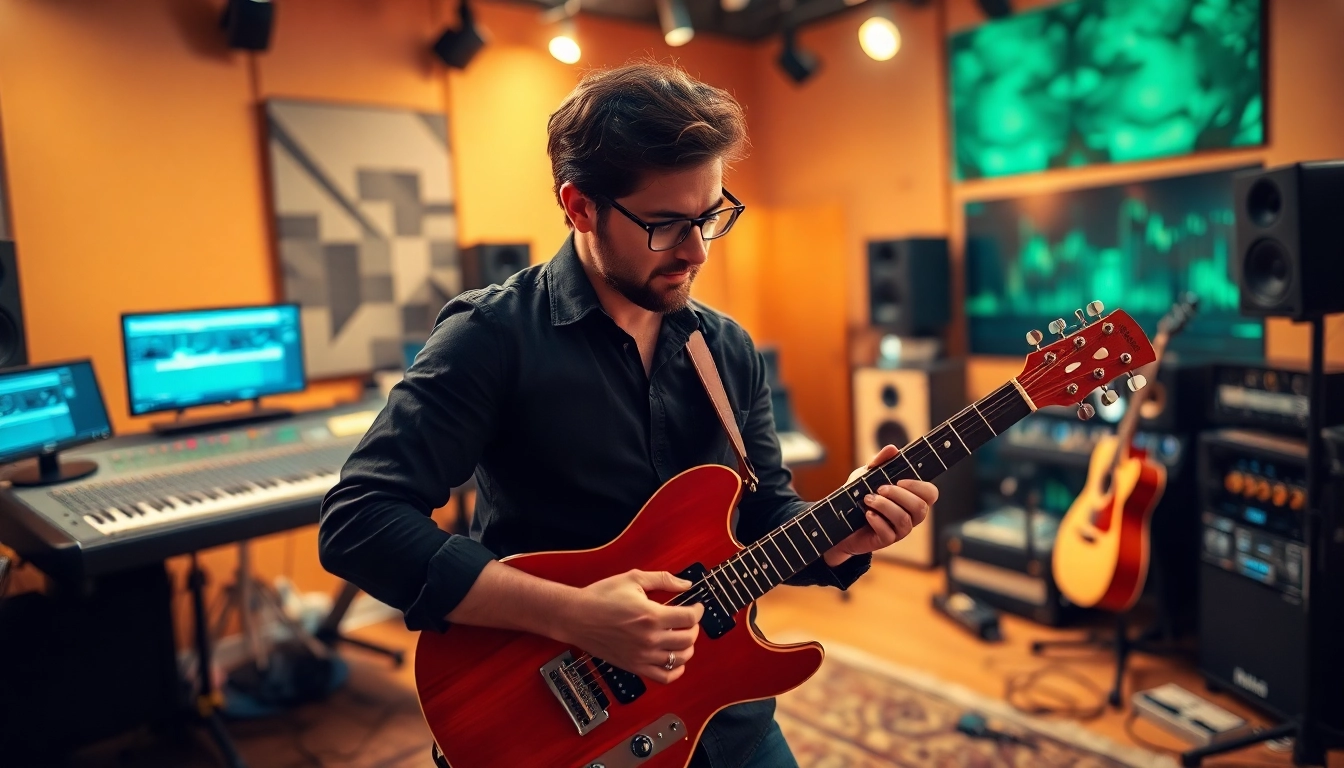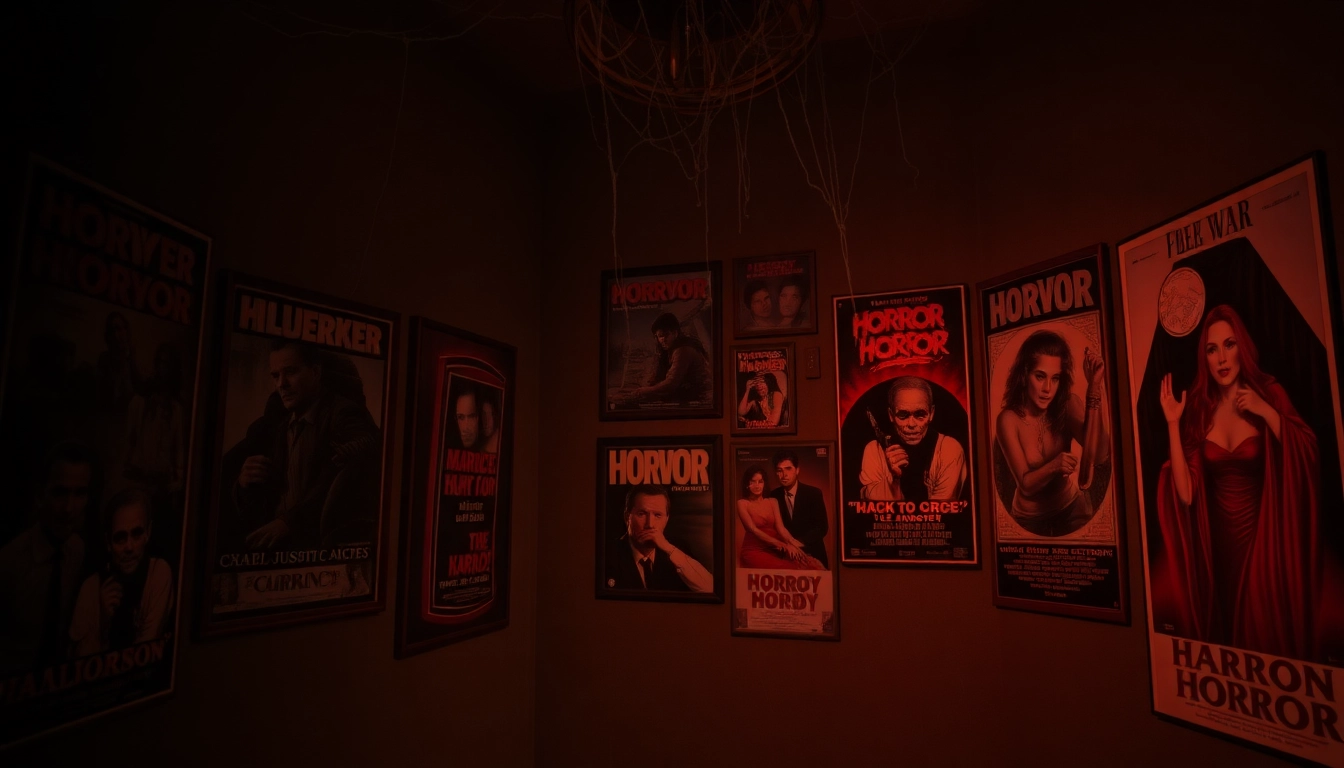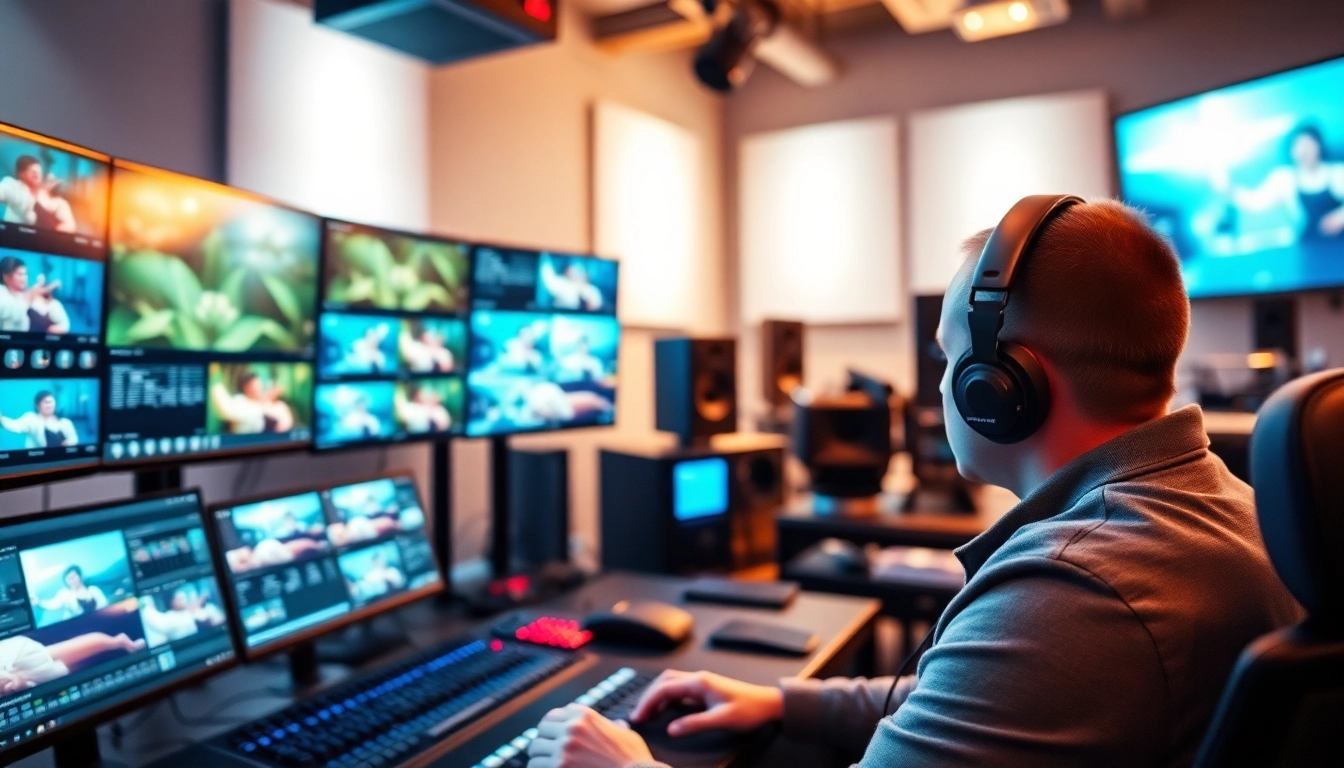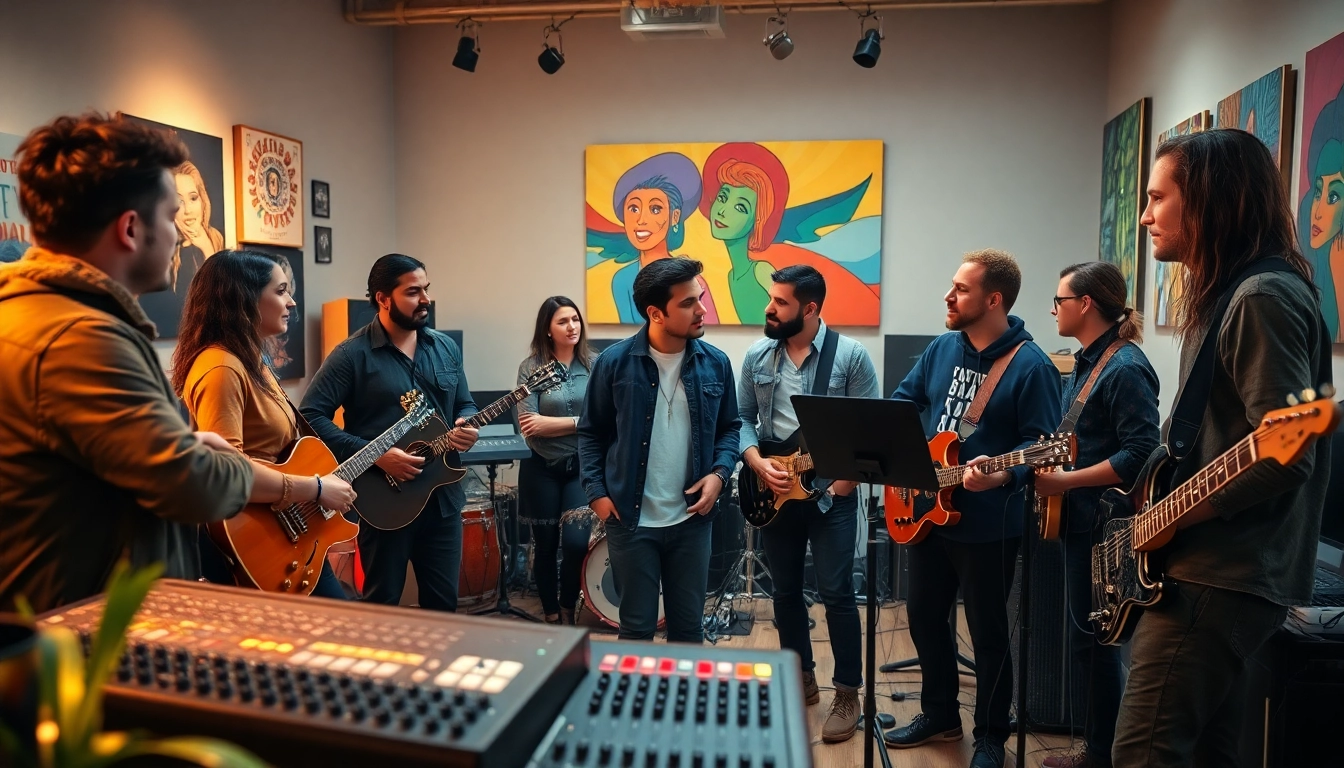Understanding the Role of Innovation in Music
As the music industry continues to evolve, the word innovation finds itself at the forefront of discussions about direction and potential. With creative artists and technology shaping how music is produced, consumed, and marketed, the role of innovation becomes critical in defining not only the soundscape of today but also the trends of tomorrow. This article delves into the nuances of innovation within the music landscape, focusing on historical milestones, current trends, and how artists, producers, and technologies interact to foster musical creativity.
Defining Innovation in the Music Industry
Innovation in music encapsulates a broad spectrum of ideas, ranging from new sounds and genres to the incorporation of technology in production, distribution, and live performance. At its core, innovation can be viewed as the process of problem-solving and reimagining existing forms to create something novel. It often challenges traditional notions of music creation and consumption, pressing artists to rethink how they reach their audience and engage with them creatively.
Historical Innovations that Shaped Music
The history of music is littered with groundbreaking innovations that have transformed the industry. From the advent of the gramophone that revolutionized the way music was recorded and played back to the development of the digital audio workstation (DAW) which changed music production processes, these innovations have consistently redefined the boundaries of creativity. The synthesizer, born in the mid-20th century, is perhaps one of the most significant innovations, allowing artists to create entirely new soundscapes unattainable with traditional instruments.
Further along the timeline, the rise of musical genres such as hip-hop and electronic music has been facilitated by innovative production techniques and technology, leading to new forms of expression and artistry. Each innovation marks a pivotal moment where music not only reflects culture but also drives it forward.
Current Trends Driving Musical Innovation
In today’s digital age, several trends are shaping musical innovation. The rise of artificial intelligence in music creation enables artists to generate new compositions or assist in the creative process, providing a new palette of possibilities. Moreover, platforms like social media allow artists to collect immediate feedback from their audience, further refining their work and pushing artistic boundaries.
Virtual reality (VR) and augmented reality (AR) technologies have also begun to reshape live performances, creating immersive experiences that engage audiences in novel ways. As these technologies develop, the intersection of music and tech continues to spur innovation, bringing forth new genres and experiences that redefine the live concert landscape.
Instruments and Technology That Foster Innovation
Electronics and Software Innovations
The era of electronic music began a radical transformation in the production of sound. Instruments such as drum machines and samplers have allowed musicians to explore and manipulate audio in ways that were impossible before. Software innovations, like cloud-based DAWs and collaborative platforms, have enabled artists to work together across geographical barriers, making the music production process more inclusive and far-reaching.
Furthermore, advancements in mobile app technology have made music creation accessible to anyone with a smartphone. This democratization of music production fosters a more diverse landscape where experimentation and innovation occur on a larger scale.
Innovative Instrument Design and Functionality
Instrument design has continually evolved over the decades, with significant innovations leading to new forms and functionalities. Instruments that combine acoustic and digital elements, such as the electric violin or hybrid synthesizers, allow musicians to create unique sounds and express their creativity in novel ways.
Moreover, the invention of MIDI controllers has transformed the performance dynamic, enabling musicians to manipulate a wide array of sounds from a single device. Innovations like these are pushing the envelope of what music can be and how it is performed, merging the lines between traditional musicianship and digital artistry.
Using Technology for Composition and Production
Technology plays a multifaceted role in modern music composition and production. With the use of advanced software, composers can visualize their music in scores, which can then become more easily translated into digital audio. The introduction of algorithmic music creation tools provides a new avenue for artists seeking inspiration, allowing machine learning systems to suggest variations, thereby enhancing the creative process.
Additionally, innovative production techniques such as sampling and looping have become central to genres like hip-hop and electronic music, enabling producers to build complex tracks from existing recordings, effectively reshaping musical norms.
The Artistic Process: Embracing Innovation
Creative Collaboration and Innovation
Collaboration has always been a cornerstone of musical innovation. Artists from various backgrounds come together to share their unique perspectives and skills, leading to fresh sounds and ideas. The modern digital landscape has further facilitated collaboration, with online platforms enabling seamless interaction between artists across the globe.
Innovative collaborations often result in genre-blending projects that challenge listeners’ expectations, pushing artists to grow and evolve. Whether it is a singer-songwriter working with a producer or bands joining forces for a viral hit, collaboration serves as a potent catalyst for artistic growth and innovation.
Exploring New Genres Through Innovation
The blending of genres has become a defining feature of contemporary music, driven largely by innovation. The fusion of styles—ranging from country-pop to jazz-hip-hop—invites listeners to experience music in new and exciting ways, creating a cultural tapestry that reflects the diversity of modern society.
Artists are now more than ever encouraged to explore new genres, taking influences from multiple music traditions, and combining them into their unique sound. This genre exploration leads to the creation of new categories within the music industry, expanding the boundaries of what is considered music.
Innovative Approaches to Live Performances
The live music experience has undergone substantial transformation, driven by innovation in both technology and artistic expression. Artists are utilizing tech advancements to create immersive experiences that blend visuals, sound, and audience interaction. Virtual concerts or hybrid performances that mix live and remote elements allow artists to reach wider audiences while remaining connected to their fans.
Innovations like holographic performances or 3D audio create multisensory experiences that engage the audience beyond traditional concerts. This shift in performance style also allows for greater experimentation with art direction, set design, and audience engagement, paving the way for a new era of live music.
Marketing and Distribution Techniques for Innovative Artists
Leveraging Social Media for Innovative Outreach
In the age of digital marketing, social media presents unparalleled opportunities for artists to showcase their work and connect with their audience. Platforms like Instagram, TikTok, and Twitter allow musicians to cultivate a personal brand while sharing snippets of their creative process, performances, and behind-the-scenes content.
Innovative social media strategies such as viral challenges or coordinated releases can effectively enhance visibility and encourage audience participation. Harnessing analytics tools can also help artists track engagement and shape their marketing strategies based on real-time audience feedback.
Using Music Streaming Platforms for Innovation
Streaming platforms fundamentally changed how music is distributed and consumed, offering a vast catalogue of songs that can be accessed globally. Artists are now leveraging these platforms to roll out innovative strategies such as singles releases and playlist placements, enhancing exposure in a saturated market.
Moreover, tools such as Spotify for Artists and Apple Music for Artists empower creators by providing data-driven insights. Artists can use this information to fine-tune their music releases and develop targeted marketing campaigns that resonate with their audience.
Challenges and Opportunities in the Digital Space
Despite the numerous opportunities presented by digital innovations, artists face significant challenges. Increased competition in the streaming landscape makes it imperative for musicians to differentiate themselves through unique artistry and marketing approaches. Additionally, revenue distribution remains a contentious issue, with many artists advocating for more equitable compensation from streaming platforms.
However, by embracing innovation in their workflows and outreach, artists can find creative solutions to these challenges. For example, direct-to-fan platforms can offer a way for musicians to sell merchandise or offers directly to their supporters, thereby cultivating a deeper connection and generating sustainable income.
Measuring the Impact of Innovation in Music
Key Performance Indicators for Innovative Success
Measuring the impact of innovation is crucial for artists aiming to gauge their effectiveness in a constantly evolving industry. Key Performance Indicators (KPIs) such as streaming numbers, social media engagement, and ticket sales provide crucial insights. Analytics tools can help artists monitor these KPIs, influencing future decisions and strategies.
Moreover, qualitative data like audience feedback and reviews can shape artistic direction and identify areas for improvement, keeping artists aligned with their audience’s preferences.
Audience Reception and Feedback Mechanisms
Incorporating audience reception into the innovation process has become increasingly vital. Engaging with fans through live Q&A sessions, polls, or interactive events helps gauge the impact of new works. Utilizing platforms that allow real-time feedback also empowers artists to tailor their approach to better align with audience expectations.
Adapting based on ongoing audience feedback fosters a more dynamic relationship between artists and fans, driving innovation. This continual loop ensures that innovation is not only artist-driven but also audience-inspired.
Case Studies of Innovative Music Artists
Numerous artists have successfully embraced innovation in their careers, setting benchmarks for others in the industry. For example, Billie Eilish’s use of unconventional recording methods and intimate soundscapes challenges contemporary pop conventions, setting herself apart as an innovator. Furthermore, her strategic use of social media has created a strong connection with her audience, propelling her music to global recognition.
In another instance, landmark collaborations such as the one between Lil Nas X and Billy Ray Cyrus on “Old Town Road” exemplified the genre-blending trend, leading to record-setting chart performances. Each of these cases showcases the powerful influence of innovation on an artist’s journey and its potential to yield groundbreaking success.



